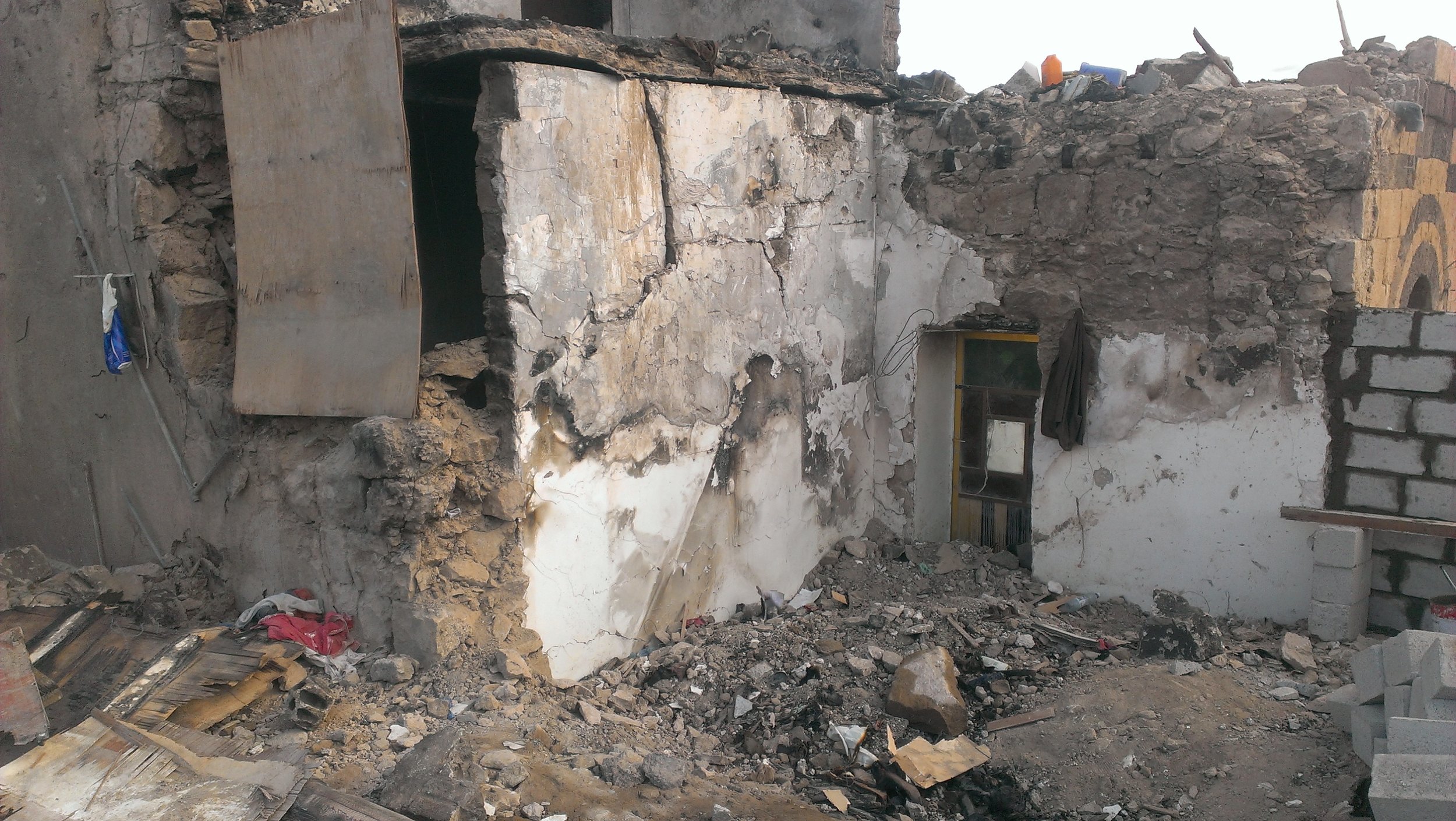On the surrounding rocky hills some four kilometers to the west of Marib City, pro-Houthi forces have been holding positions since early this month, while the Saudi-led coalition’s own forces along with local tribal fighters fight to sweep them out of the way to the capital, Sanʻa. The coalition’s ground offensive in the oil-rich governorate of Marib, in central Yemen, is part of a larger strategy to take control of Sanʻa, some 175 km to the west of the governorate.
The ongoing battle in Marib, though, seems to have produced a standoff so far, two weeks after the ground offensive officially began on September 13, hours after the exiled President Hadi and his government in Riyadh backed out of UN-sponsored talks to end the months-long conflict in Yemen.
According to several sources in Marib, however, clashes between tribal fighters and pro-Houthi forces were already taking place more than a week earlier. The coalition-trained Maribi fighters and coalition armed forces were “sent as reinforcements.”
“The fighting broke out late in August in Sirwah district [northwest of Marib], when the Houthis attempted to make a push toward Marib City,” a tribal elder in the city told the YPP via telephone, indicating that the clashes between the warring parties were escalating day by day.
Coalition forces based in the Safer area, to the east of Marib City, have been reportedly preparing to mount a ground offensive as part of their larger campaign to “liberate” Houthi-controlled Sanʻa, in what was allegedly dubbed “Operation Sweeping Current.”
Meanwhile, pro-Houthi forces were able to advance on the rocky hills outside Marib, after fierce clashes along three fronts there killed dozens on both sides, according to local tribal and military sources.
On September 4, Houthis also fired a short-range ballistic missile from Bayhan district of the neighboring Shabwah province, killing 67 Emirati, Saudi, Bahraini soldiers as well as an unknown number of local tribal fighters at a camp in Safer.
By September 8, four days after the ballistic missile attack, hundreds of trained tribal fighters along with a number of coalition’s own forces were seen heading for Marib city, coming from Safer.
“At least 700 local fighters, who were trained in Saudi Arabia along with troops from the coalition forces, have arrived in the headquarters of the 3rd Military Region and a military base in Sahn al-Jin area,” military sources in Marib told the YPP, pointing out that the military base in the area is used as a training camp for the local fighters.
The military sources, who spoke on condition of anonymity, said that these allied troops were “sent as reinforcements on Tuesday [September 8],” after the pro-Houthi forces took control of three positions near the rocky hills.
Despite those reinforcements, the pro-Houthi forces “started to carry out heavy missile attacks using Katyusha and Uragan BM-27 rocket launchers, targeting both the HQ of the 3rd Military Region and the training camp,” said the sources, adding that several coalition troops were killed, and a number of armored vehicles destroyed.
On that day, the UAE government officially stated that one Emirati soldier was killed in the Marib fighting. There had been no official comments from the other Gulf States participating in the current ground offensive, but Houthi-affiliated media outlets claimed that two Qatari soldiers were killed, and that a score of armored vehicles were totally destroyed. Those figures could not be confirmed independently.
In response, the tribal fighters fought their way back to the western areas of al-Jufaina, Edat al-Raa’ and Tabbat al-Masaryah, where pro-Houthi forces are holding their positions. Coalition fighter jets and Apache helicopters provided the Maribi fighters with air support, according to both military sources.
On September 12, the Saudi-led coalition officially announced the ground offensive in Marib, hours after the exiled government in Riyadh announced it would not participate in the UN-backed peace talks, which were expected to be held in few days later.
On Friday, September 25, at least 1,000 local fighters, who had been trained in Saudi Arabia, crossed through the town of al-Abr in Hadhramawt governorate, and headed for Marib aboard military armored vehicles and tanks.
The military sources said that these troops arrived at the HQ of the 3rd Military Region and the military base in Sahn al-Jin area. “But this time, the troops advanced under an air cover and after heavy airstrikes” on Houthi positions. According to several tribal sources in Marib, the fighters aboard military armored trucks pushed into the western fronts under heavy aerial cover on Saturday, indicating that al-Jufaina and Tabbat al-Masaryah fronts have seen the most brutal fighting.
On Sunday, a weapons depot in Tabbat al-Masaryah was bombed by airstrikes and flames were seen rising above this rocky hill front, according to the sources. The airstrikes have also targeted a Houthi checkpoint in Harib area of Shabwah, on the border with Marib, killing a number of Houthi fighters including their leader, who was identified as Abo Malek al-Khawlani.
On Monday, the tribal fighters closed in on the pro-Houthi forces at the Tabbat al-Masaryah front in the northwest, and were poised to drive them out from two positions, said a local tribal source, indicating that the push uphill was preceded with the heaviest airstrikes and the artillery shells yet seen. However, the Houthi-affiliated TV channel al-Masira said that Houthi forces were making "a tactical retreat," and that "the aggressors were using internationally banned missiles".
The fighting is not over yet in Marib; on Sunday the convoy of one of the Yemeni military commanders in charge of “liberating” Marib, Brigadier al-Qumayri, hit a landmine planted by the pro-Houthi forces. Four of al-Qumayri's body guards were killed, including his son, Hamza, and several others were injured, while he survived the bombing unscathed, according to a tribal source.
Update: Yemen Press reported on Tuesday that tribal and coalition forces had gained full control of Marib Dam, as well as Tabbat al-Masaryah. The YPP's sources confirmed those reports.





